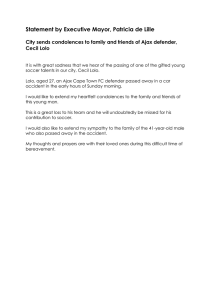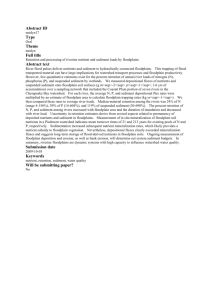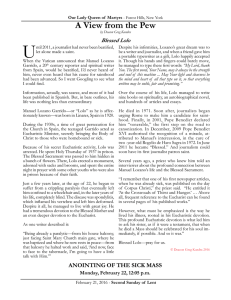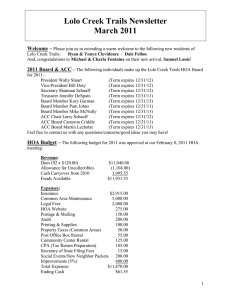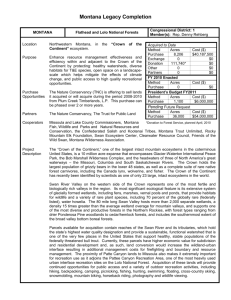Comments for FY2015 319 Project Proposal Sponsor: Clark Fork
advertisement
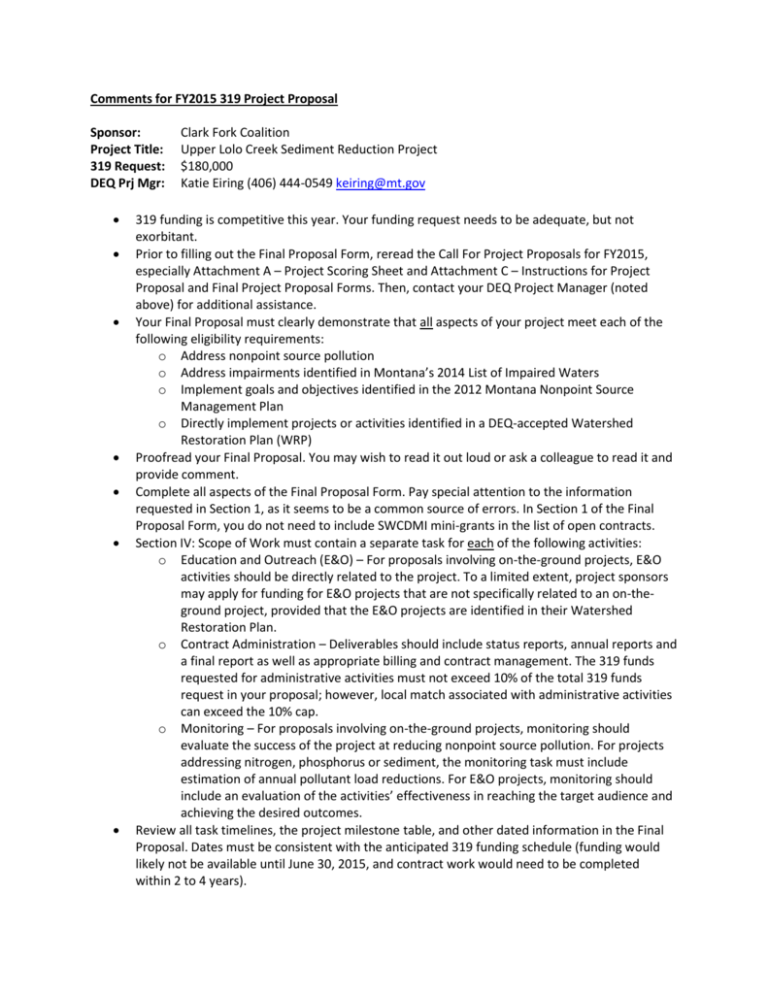
Comments for FY2015 319 Project Proposal Sponsor: Project Title: 319 Request: DEQ Prj Mgr: Clark Fork Coalition Upper Lolo Creek Sediment Reduction Project $180,000 Katie Eiring (406) 444-0549 keiring@mt.gov 319 funding is competitive this year. Your funding request needs to be adequate, but not exorbitant. Prior to filling out the Final Proposal Form, reread the Call For Project Proposals for FY2015, especially Attachment A – Project Scoring Sheet and Attachment C – Instructions for Project Proposal and Final Project Proposal Forms. Then, contact your DEQ Project Manager (noted above) for additional assistance. Your Final Proposal must clearly demonstrate that all aspects of your project meet each of the following eligibility requirements: o Address nonpoint source pollution o Address impairments identified in Montana’s 2014 List of Impaired Waters o Implement goals and objectives identified in the 2012 Montana Nonpoint Source Management Plan o Directly implement projects or activities identified in a DEQ-accepted Watershed Restoration Plan (WRP) Proofread your Final Proposal. You may wish to read it out loud or ask a colleague to read it and provide comment. Complete all aspects of the Final Proposal Form. Pay special attention to the information requested in Section 1, as it seems to be a common source of errors. In Section 1 of the Final Proposal Form, you do not need to include SWCDMI mini-grants in the list of open contracts. Section IV: Scope of Work must contain a separate task for each of the following activities: o Education and Outreach (E&O) – For proposals involving on-the-ground projects, E&O activities should be directly related to the project. To a limited extent, project sponsors may apply for funding for E&O projects that are not specifically related to an on-theground project, provided that the E&O projects are identified in their Watershed Restoration Plan. o Contract Administration – Deliverables should include status reports, annual reports and a final report as well as appropriate billing and contract management. The 319 funds requested for administrative activities must not exceed 10% of the total 319 funds request in your proposal; however, local match associated with administrative activities can exceed the 10% cap. o Monitoring – For proposals involving on-the-ground projects, monitoring should evaluate the success of the project at reducing nonpoint source pollution. For projects addressing nitrogen, phosphorus or sediment, the monitoring task must include estimation of annual pollutant load reductions. For E&O projects, monitoring should include an evaluation of the activities’ effectiveness in reaching the target audience and achieving the desired outcomes. Review all task timelines, the project milestone table, and other dated information in the Final Proposal. Dates must be consistent with the anticipated 319 funding schedule (funding would likely not be available until June 30, 2015, and contract work would need to be completed within 2 to 4 years). Remember to include all applicable attachments (see Section V of the Final Proposal Form). Late or incomplete Final Proposal Forms will not be considered. If you have any questions please call your DEQ Project Manager well before the Final Proposal due date of September 29, 2014. Other Comments Include a letter of support from the Lolo Watershed Group with the final proposal. Letter needs to indicate their support of the project as well as how they believe this project implements the WRP. There was a question as to whether there has been a significant decrease in sediment as a result of the 65 miles of road work done in the area. There has not been enough monitoring to determine the response. So an important aspect of this process will be to start with monitoring to determine a baseline for sediment that can be used after project is completed to establish whether project met goals. In regards to Task 1, please provide a more detailed cost estimate and please divide planning and implementation out into two separate tasks. In regards to Task 2, the total cost estimate for the SAP seems a little low. In regards to Task 3, is the Lolo NF going to be supporting the monitoring and sediment load estimate and how do they plan on doing that? If you are planning on doing any work, construction, storage, etc. in what might be a floodplain, contact your local floodplain administrator before you begin. A list of contacts for each county can be found here: http://dnrc.mt.gov/wrd/water_op/floodplain/contacts/communities_floodplain_administrators. pdf Has a NEPA been completed and where does it stand in regards to decommissioning roads? Please provide a letter of commitment from the Lolo NF in regards to the NEPA. Does the Lolo NF have a Travel Management Plan? This should be addressed in the final application. Does the Lolo NF have a Master Partnership agreement with CFC? This should be addressed in the final application.
